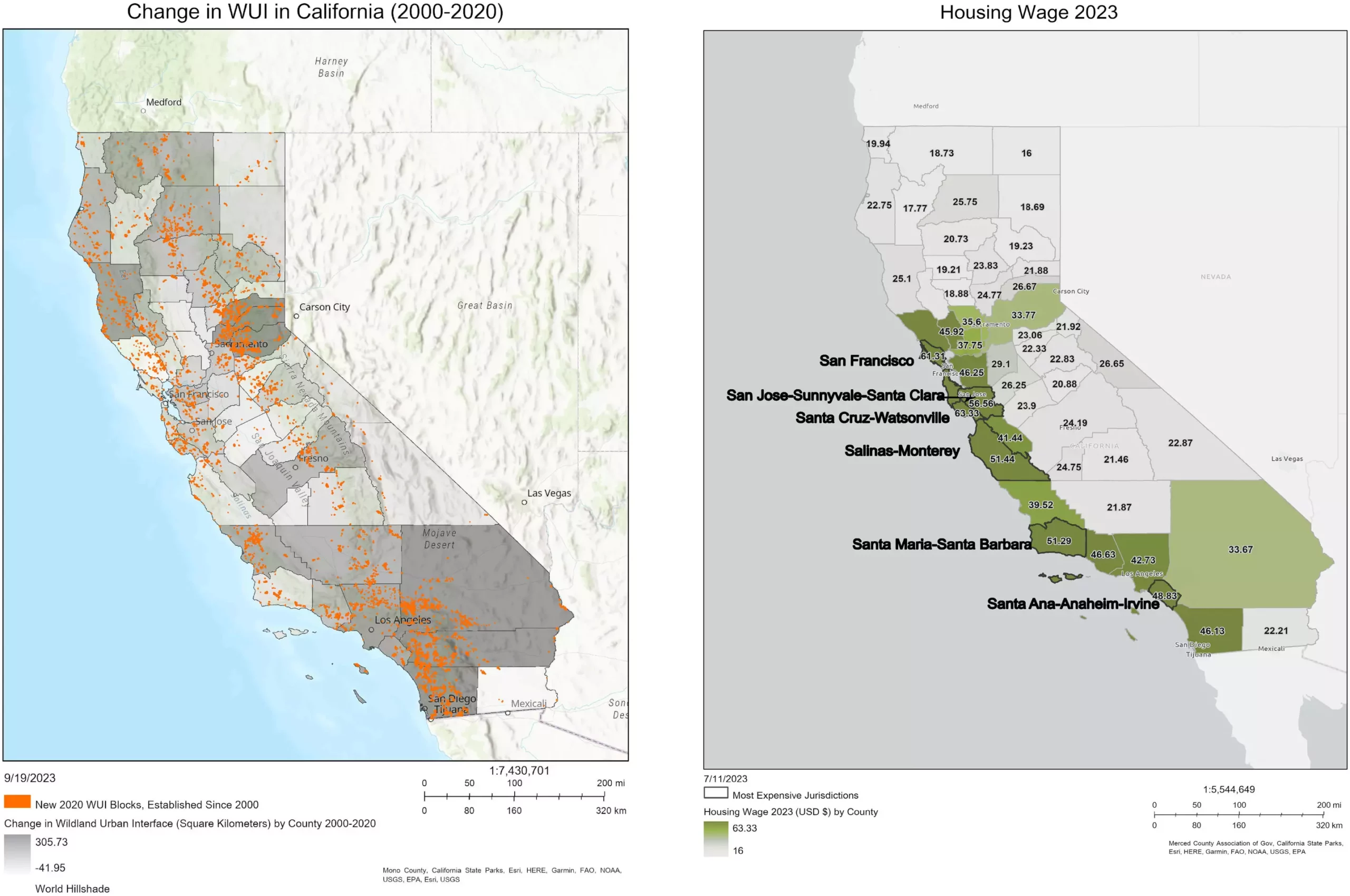The ongoing housing crisis in California has brought to light serious concerns regarding the relationship between affordable housing shortages and the alarming increase in development within Wildland-Urban Interfaces (WUIs). Recent research conducted by scholars from UC Santa Cruz aims to elucidate how these intertwined challenges are altering the socio-environmental landscape, particularly in urban areas adjacent to wildlands. This phenomenon is critical as it poses risks not only for residents but also for natural ecosystems, prompting urgent questions about the sustainability of urban planning practices.
Since the 1990s, California has witnessed a striking rise in WUI development, leading to over one-third of households residing in close proximity to natural landscapes. These areas, while appealing for their scenic vistas and natural beauty, also significantly elevate the risks associated with climate change-related disasters, such as wildfires, floods, and landslides. The juxtap of human habitation and wilderness complicates environmental management, making WUI developments a focal point for researchers examining climate sustainability. The increasing tendency for development in these areas underscores a need for an urgent reassessment of housing policies and urban planning strategies.
The root cause of the boom in WUI development appears to stem from California’s dire housing affordability crisis. As urban centers become increasingly unmanageable for average residents—especially those from lower-income brackets—many are driven to seek out housing options in the WUI, where properties may be more accessible financially. This emerging trend marks a significant shift in the motivations driving people to these wildland-adjacent areas, as historical factors related to family ties and lifestyle preferences have been eclipsed by economic imperative. The research led by UC Santa Cruz aims to analyze this paradigm shift in-depth, considering the socio-economic impact on diverse demographic groups who find themselves increasingly vulnerable in the context of a changing climate.
Integrated Methodology: A Closer Look at the Study’s Approach
The research utilizes a mixed-methods approach encompassing surveys, ethnographic interviews, and an integration of census data with WUI mapping and ecological assessments. The combination of qualitative and quantitative methodologies promises to furnish richer insights into the demographics of WUI populations and the socio-economic conditions that shape their experiences. Further, the inclusion of Indigenous land stewardship practices within the research will provide a nuanced perspective on habitat restoration in relation to growth patterns. Such a holistic approach is poised to deliver findings that emphasize the interconnected dynamics of housing and ecological sustainability.
Impacts of Socioeconomic Inequality on WUI Residents
As environmental risks escalate, the research team anticipates that their findings will reveal stark inequalities among residents in the WUI. Although all inhabitants face similar climate-related threats, those with fewer resources and less knowledge about navigating these landscapes are at a distinct disadvantage during emergencies. This disparity suggests that the WUI essentially serves as a microcosm of broader societal inequities exacerbated by environmental challenges. This effect becomes pronounced in WUI intermix developments, which often showcase a collage of wealth, with affluent estates existing alongside more precarious living arrangements such as makeshift homes. The implications of this socioeconomic stratification cannot be understated; understanding and addressing these disparities are critical for effective disaster preparedness and recovery.
Reimagining Urban Sustainability for Broader Impact
The pressing concerns voiced by the research team urge urban planners and policymakers to rethink existing strategies in light of both affordable housing crises and climate change. To foster true sustainability, it is imperative to integrate housing policies with environmental management at city, state, and federal levels. This calls for a transformative approach in which urban sustainability extends beyond immediate boundaries, recognizing that the decisions made within city limits can profoundly affect life in adjacent natural areas. By reinforcing the notion that urban environments and their surrounding natural landscapes are inextricably linked, we can better advocate for policies that encompass housing affordability, ecological protection, and overall community resilience.
The study from UC Santa Cruz highlights the urgent need to view affordable housing as not merely a social issue but as a critical component of environmental sustainability. Addressing this nexus requires collaboration across disciplines and sectors, urging us to expand our understanding of urban planning and its long-reaching consequences. The fight for accessible urban housing is not only about meeting community needs; it is integral to fostering resilient ecosystems capable of weathering the challenges of climate change. As cities continue to struggle with pressing socio-economic dilemmas, policies must evolve to recognize and remedy the interconnectedness of urban and ecological health, ensuring that vulnerable populations are no longer forced into high-risk environments.

